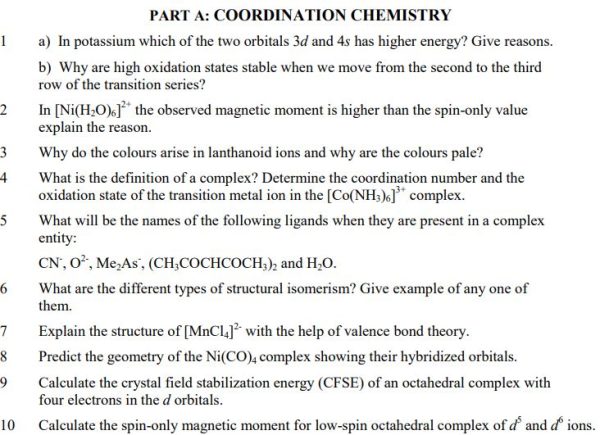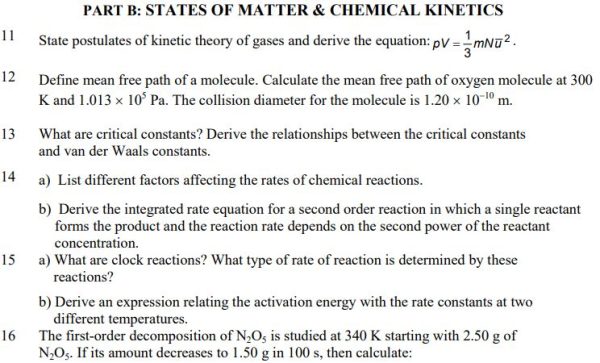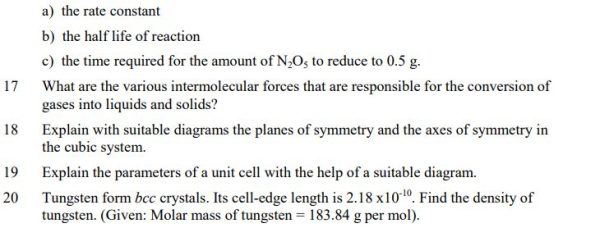Bought By: 6481
Rating:

Get Good Marks in your BSCG Chemistry Programme in the Term-End Exams even if you are busy in your job or profession.
We've sold over 39,542,091 Help Books and Delivered 48,118,189 Assignments Since 2002.
As our customers will tell you...yes, it really result-oriented.
 Determine (i) the order of the reaction with respect to NO and Cl2; (ii) the rate law; and (iii) the rate constant
17. Give the reasons for the striking contrast in the boiling points of ethanol (351 K) and dimethyl ether (249 K). Give suitable diagrams to illustrate this.
18. What are the elements of symmetry? Give the suitable diagrams for any one of them.
19. Explain close packing in two dimensions for a crystalline solid with the help of a suitable diagram.
20. Give the consequences of Schottky and Frenkel defect.
Determine (i) the order of the reaction with respect to NO and Cl2; (ii) the rate law; and (iii) the rate constant
17. Give the reasons for the striking contrast in the boiling points of ethanol (351 K) and dimethyl ether (249 K). Give suitable diagrams to illustrate this.
18. What are the elements of symmetry? Give the suitable diagrams for any one of them.
19. Explain close packing in two dimensions for a crystalline solid with the help of a suitable diagram.
20. Give the consequences of Schottky and Frenkel defect.


To attend IGNOU BCHCT-137 Term-End Examination, you must first submit your Assignments to the university and it is possible from the BCHCT-137 study material. You can solve all necessary Assignments using Help Books. This will help in gaining good marks.
All best wishes with our efforts that you do not meet any obstacle before attending examinations next year. You can pass the BSCG Chemistry Programme Annual Exams with a good grade using Books/Materials from any one place at home or anywhere else!
ALL THE BEST!!!
Team GullyBaba